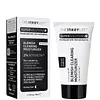What's inside
What's inside
 Key Ingredients
Key Ingredients

 Benefits
Benefits

 Concerns
Concerns

 Ingredients Side-by-side
Ingredients Side-by-side

Water
Skin ConditioningGlycerin
HumectantOctyldodecanol
EmollientCaprylic/Capric Triglyceride
MaskingSodium Ascorbyl Phosphate
AntioxidantSulfur
AntiseborrhoeicArachidyl Alcohol
EmollientPentaerythrityl Distearate
EmulsifyingSqualane
EmollientGlyceryl Stearate Se
EmulsifyingCitronellyl Methylcrotonate
MaskingBehenyl Alcohol
EmollientAcacia Senegal Gum
MaskingArachidyl Glucoside
EmulsifyingPhenoxyethanol
PreservativeAmmonium Acryloyldimethyltaurate/Vp Copolymer
Panthenol
Skin ConditioningXanthan Gum
EmulsifyingBenzyl Alcohol
PerfumingCitric Acid
BufferingRetinol
Skin ConditioningSodium Hyaluronate
HumectantEthylhexylglycerin
Skin ConditioningPentylene Glycol
Skin ConditioningSodium Metabisulfite
AntioxidantPistacia Lentiscus Gum
MaskingDehydroacetic Acid
PreservativeLecithin
EmollientGlucose
HumectantTocopherol
AntioxidantGlyceryl Caprylate
EmollientWater, Glycerin, Octyldodecanol, Caprylic/Capric Triglyceride, Sodium Ascorbyl Phosphate, Sulfur, Arachidyl Alcohol, Pentaerythrityl Distearate, Squalane, Glyceryl Stearate Se, Citronellyl Methylcrotonate, Behenyl Alcohol, Acacia Senegal Gum, Arachidyl Glucoside, Phenoxyethanol, Ammonium Acryloyldimethyltaurate/Vp Copolymer, Panthenol, Xanthan Gum, Benzyl Alcohol, Citric Acid, Retinol, Sodium Hyaluronate, Ethylhexylglycerin, Pentylene Glycol, Sodium Metabisulfite, Pistacia Lentiscus Gum, Dehydroacetic Acid, Lecithin, Glucose, Tocopherol, Glyceryl Caprylate
Water
Skin ConditioningGlycerin
HumectantPropylene Glycol
HumectantPolysorbate 20
EmulsifyingSodium Ascorbyl Phosphate
AntioxidantCarbomer
Emulsion StabilisingSebacic Acid
BufferingNiacinamide
SmoothingRetinol
Skin ConditioningPhytic Acid
Tetrahexyldecyl Ascorbate
AntioxidantAllantoin
Skin ConditioningAlpha-Arbutin
AntioxidantCamellia Sinensis Leaf Extract
AntimicrobialRetinal
Skin ConditioningAscorbic Acid
AntioxidantCeramide NP
Skin ConditioningOctadecenedioic Acid
EmulsifyingPhospholipids
Skin ConditioningFerulic Acid
AntimicrobialOlive Glycerides
EmulsifyingSalicylic Acid
MaskingCaprylic/Capric Triglyceride
Masking10-Hydroxydecanoic Acid
Skin Conditioning1,10-Decanediol
SolventTriethanolamine
BufferingCyclohexane
SolventButylene Glycol
HumectantMethylparaben
PreservativePropylparaben
PreservativeBHT
AntioxidantBHA
AntioxidantPotassium Sorbate
PreservativeSodium Benzoate
MaskingWater, Glycerin, Propylene Glycol, Polysorbate 20, Sodium Ascorbyl Phosphate, Carbomer, Sebacic Acid, Niacinamide, Retinol, Phytic Acid, Tetrahexyldecyl Ascorbate, Allantoin, Alpha-Arbutin, Camellia Sinensis Leaf Extract, Retinal, Ascorbic Acid, Ceramide NP, Octadecenedioic Acid, Phospholipids, Ferulic Acid, Olive Glycerides, Salicylic Acid, Caprylic/Capric Triglyceride, 10-Hydroxydecanoic Acid, 1,10-Decanediol, Triethanolamine, Cyclohexane, Butylene Glycol, Methylparaben, Propylparaben, BHT, BHA, Potassium Sorbate, Sodium Benzoate
 Reviews
Reviews

Alternatives
Ingredients Explained
These ingredients are found in both products.
Ingredients higher up in an ingredient list are typically present in a larger amount.
This ingredient is an emollient, solvent, and texture enhancer. It is considered a skin-softener by helping the skin prevent moisture loss.
It helps thicken a product's formula and makes it easier to spread by dissolving clumping compounds.
Caprylic Triglyceride is made by combining glycerin with coconut oil, forming a clear liquid.
While there is an assumption Caprylic Triglyceride can clog pores due to it being derived from coconut oil, there is no research supporting this.
Learn more about Caprylic/Capric TriglycerideGlycerin is already naturally found in your skin. It helps moisturize and protect your skin.
A study from 2016 found glycerin to be more effective as a humectant than AHAs and hyaluronic acid.
As a humectant, it helps the skin stay hydrated by pulling moisture to your skin. The low molecular weight of glycerin allows it to pull moisture into the deeper layers of your skin.
Hydrated skin improves your skin barrier; Your skin barrier helps protect against irritants and bacteria.
Glycerin has also been found to have antimicrobial and antiviral properties. Due to these properties, glycerin is often used in wound and burn treatments.
In cosmetics, glycerin is usually derived from plants such as soybean or palm. However, it can also be sourced from animals, such as tallow or animal fat.
This ingredient is organic, colorless, odorless, and non-toxic.
Glycerin is the name for this ingredient in American English. British English uses Glycerol/Glycerine.
Learn more about GlycerinRetinol is a gold-standard ingredient for anti-aging. It is a form of Vitamin A and belongs to the class of retinoids that also includes tretinoin.
Why is retinol famous?
It has the most scientific studies backing up its skin benefits out of all the non-prescription ingredients.
Retinol is proven to:
This is why retinol is effective at removing wrinkles, fading dark spots, treating acne, and reducing the appearance of pores.
Studies show retinol is less effective when exposed to UV. Be sure to look for appropriate packaging to keep your retinol potent (similar to Vitamin C).
Using retinol or any retinoids will increase sun-sensitivity in the first few months. Though studies show retinoids increase your skin's natural SPF with continuous use, it is best to always wear sunscreen and sun-protection.
We recommend speaking with a medical professional about using this ingredient during pregnancy.
Retinol may cause irritation in some people, so be sure to patch test. Experts recommend 'ramping up' retinol use: start using this ingredient once a week and work up to using it daily.
Read about Tretinoin
Learn more about RetinolSodium Ascorbyl Phosphate is a form of Vitamin C. It is the salt of ascorbic acid.
This ingredient is more gentle than ascorbic acid. It is also more stable when exposed to light and oxygen.
Vitamin C helps reduce redness, improve skin texture, reduce the effects of aging, reduce the visibility of dark spots, and brighten skin.
Your skin uses Vitamin C to produce collagen and collagen production plays a role in having a strong skin barrier and plump skin. As an antioxidant, this ingredient also helps reduce the signs of aging such as fine-lines and wrinkles.
VItamin C helps brighten skin by blocking the process of skin darkening.
In a 2011 study, Sodium Ascorbyl Phosphate was found to have antibacterial properties. This may help treat acne.
Read more about other types of Vitamin C:
Learn more about Sodium Ascorbyl PhosphateWater. It's the most common cosmetic ingredient of all. You'll usually see it at the top of ingredient lists, meaning that it makes up the largest part of the product.
So why is it so popular? Water most often acts as a solvent - this means that it helps dissolve other ingredients into the formulation.
You'll also recognize water as that liquid we all need to stay alive. If you see this, drink a glass of water. Stay hydrated!
Learn more about Water